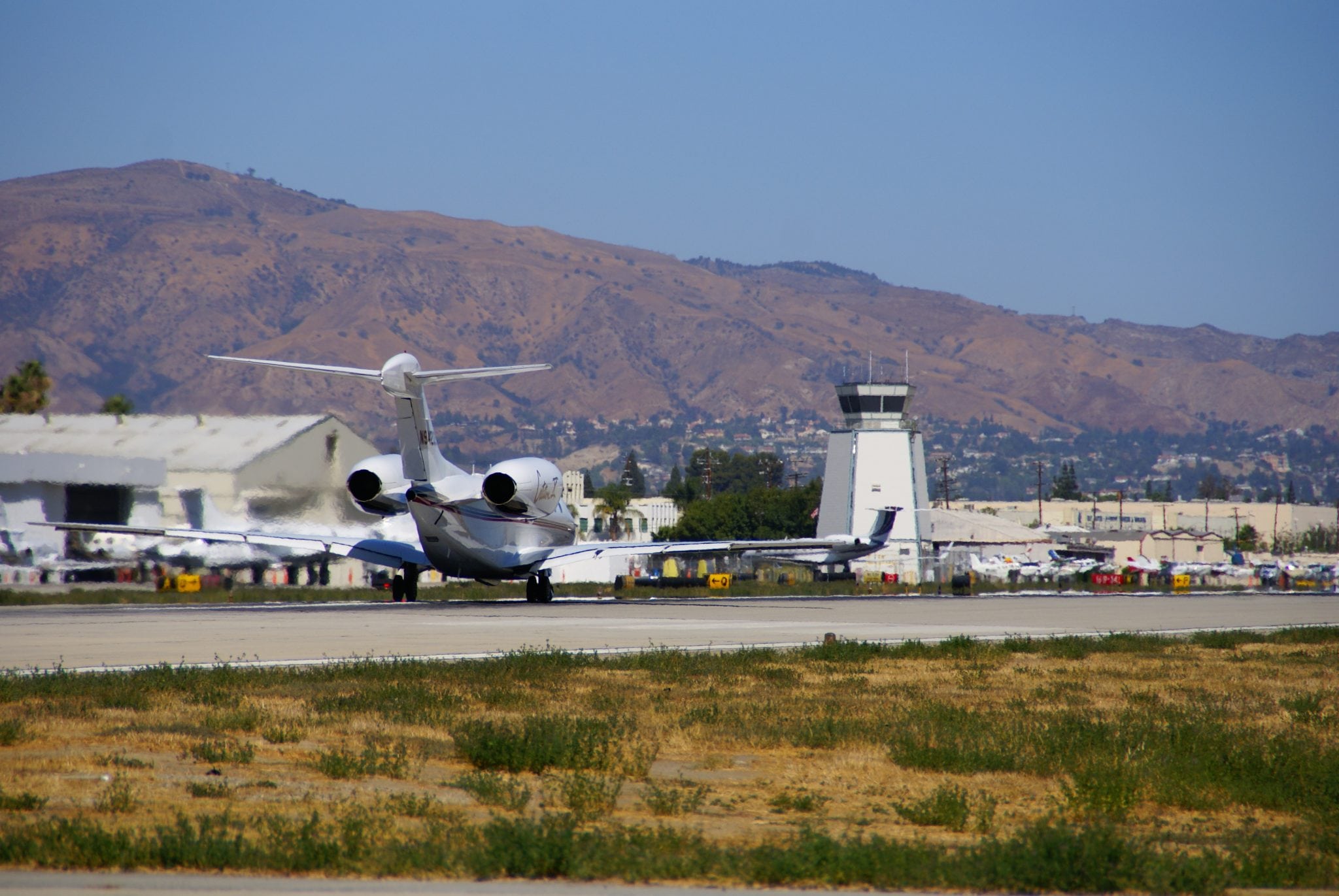[Avionics Today 06-23-2015] The FAA is planning to introduce 109 new satellite-based aircraft navigation procedures into the Southern California Metroplex. Under the ongoing rollout of NextGen, the procedures are designed to allow for more direct routing with fixed routes, altitudes and speeds while also expanding the number of entry and exit points into a number of different airports within Southern California’s airspace.

Van Nuys Airport (VNY) is one of the 11 airports that will see new satellite-based procedures under the Southern California Metroplex initiative. Photo: LA World Airports.
Metroplex is an initiative within NextGen that takes a geographic area covering several airports that serve major metropolitan areas with a diversity of aviation stakeholders and recreates its skyways to allow aircraft to use their Flight Management Computers (FMC) and advanced navigation systems to fly the two areas of Performance Based Navigation (PBN): Area Navigation (RNAV) and Required Navigation Performance (RNP). In Southern California, the FAA is proposing 50 new departures, 37 arrivals and 22 approach procedures that guide aircraft down until they’re close to reaching there destination airports.
The 11 different airports included in the Southern California Metroplex project are the following: Bob Hope (BUR), Hawthorne Municipal (HHR), Los Angeles International (LAX), Long Beach (LGB), Ontario International (ONT), Oxnard (OXR), Palm Springs International (PSP), San Diego International (SAN), Santa Monica Municipal (SMO), John Wayne-Orange County (SNA) and Van Nuys (VNY).
Prior to launching the Southern California Metroplex initiative, the FAA released a draft environmental assessment for the region, which included results from a study that calculated noise at more than 175,000 points throughout the region. This noise modeling study should help the agency avoid the public backlash it has received from communities in other regions through the National Airspace System (NAS), where similar satellite based procedures have been implemented to improve throughput. For example, the city of Phoenix recently announced its decision to file a lawsuit against the FAA regarding increased aircraft noise that it claims resulted from the implementation of new Area Navigation (RNAV) flight routes into Phoenix Sky Harbor International Airport.
Within the “Environmental Assessment for the Southern California Metroplex Project” report, the FAA also outlined the need for modernizing the region’s airspace.
“The problem in this case is the inefficiency of the existing aircraft flight procedures in the Southern California Metroplex. This is due to the use of older Navaid technology when newer RNAV technology is readily available,” the report says. “More than 90 percent of U.S. scheduled air carriers are equipped for some level of RNAV. However, under existing conditions, only 23 of the existing 96 procedures currently used in the Southern California Metroplex are RNAV procedures.”
Last week, the FAA began holding a number of public workshops in the communities surrounding airports listed within its Southern California Optimization of Airspace Procedures in the Metroplex (OAPM) initiative, and is also accepting public comments on the project through July 1.
While the agency is still calculating the projected fuel savings and emissions data for the Southern California program, it does have previous results to draw from. The agency estimates that the North Texas Metroplex project, completed late last year, will save aircraft flying in North Texas airspace an estimated 4.1 million gallons of fuel per year. Alaska Airlines has estimated that the use of the procedures can save its airline up to 2.1 million gallons of fuel annually and reduce carbon emissions by 22,000 metric tons. During a recent interview with Avionics Magazine, Jim Davis, national airspace lead for the National Air Traffic Controllers Association (NATCA), said the both the FAA and NATCA will continue to use lessons learned from previous metroplex projects as deployment begins in other regions around the country.
“We have a lot to learn from the Houston and North Texas post implementation activities. These metroplexes support several airline hubs and we hope that we can learn more about any ripple effects — either positive or negative — of these new procedures,” said Davis.